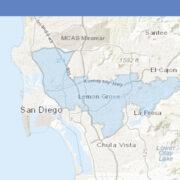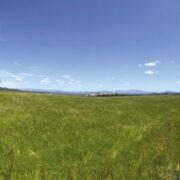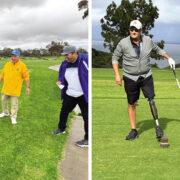Water is life. Without it, there would be no life on Planet Earth. Without soft drinks, which is toxic to our organs, life would go on, and more people, especially children, would even be healthier.
The normal lean adult body is made up of about 70 percent water (50 percent intracellular; 15 percent interstitial; and, 5 percent in the blood plasma) and only 30 percent solid mass. This is an amazing fact which many of us don’t realize.
Drinking at least 8 glasses of water a day benefits almost everyone in more ways than one. Adequate water intake helps us look and fell better by maintaining our blood in perfect liquid form to carry oxygen and nutrients to the cells, regulating our body temperature, assisting our kidneys eliminate harmful wastes and elements, lubricating our joints, revitalizing our dull skin and keeping our weight in check, to list some of its numerous major functions.
Our daily normal physiologic fluid loss (without exercise, illness, etc.) is as follows: Infants (2-10 kg): 300-800cc; Child (10-40 kg): 840 -1500 cc; and Adult (60 kg): 1800-2100 cc. The minimum 8-glasses-a-day (250cc per glass) recommendation for an adult barely equals the daily fluid loss. On the average, therefore, the replacement should actually be about 10% more than the daily fluid loss.
Since the human thirst mechanism is not very reliable (most often thirst is mistaken by our brain for hunger), drinking at least 8 glasses a day is a good rule to follow, whether one feels thirsty or not. In most instances, dehydration has already taken place before the person feels thirsty. Don’t wait for dryness of the mouth, nasal passages, eyes, and any of those symptoms listed above before drinking water. It is best to pre-empt thirst.
If we don’t drink enough water, a host of problems, in varying proportional degrees, can occur, like fatigue, headaches, irritability, mental dullness, sagging skin, retention of toxic wastes in our body, weight gain, kidney stone formation and urinary tract infection. If dehydration is severe, shock and death could ensue.
The best fluid to satisfy our thirst is properly filtered water. Not cola drinks, energy drinks, or alcoholic beverages, all of which cause us to urinate and further lose more fluids, not to mention their adverse side-effects on the heart, kidneys and liver. Nothing is better than the old fashioned clean, fresh, sparkling water.
Facts and trivia
Here are some interesting and helpful information about water that we wish to share with you.
1. Seventy-five percent of Americans are chronically dehydrated. We don’t have statistics for the Philippines, but I suspect the incidence would be close.
2. In 37 percent, the thirst mechanism is so weak that it is often mistaken for hunger. This leads to overeating and weight gain. Drinking a tall of glass of water before each meal will help one lose weight.
3. Even MILD dehydration will slow down one’s metabolism as much as 3 percent. Male potency and female lubrication are reduced by dehydration.
4. One glass of water will shut down midnight hunger pangs for almost 100 percent of the dieters reported in a University of Washington study.
5. Lack of water is the number one trigger of daytime fatigue.
6. Preliminary research indicates that 8-10 glasses of water a day could significantly ease back and joint pain for up to 80 percent of sufferers.
7. A mere 2 percent drop in body water can trigger fuzzy short-term memory trouble with basic math, and difficulty focusing on the computer screen or a printed page.
8. Drinking 5 glasses of water daily decreases the risk of colon cancer by 45 percent, plus it can slash the risk of breast cancer by 79 percent, and one is 50 percent less likely to develop bladder cancer.
The cola drink
The following interesting pieces of information have been emailed to me. For whatever they are worth, here they are:
1. In many parts of the United States the highway patrol carries two gallons of cola drinks in the truck to remove blood from the highway after a car accident.
2. You can put a T-bone steak in a bowl of cola beverage and it will be gone in a few days days.
3. To clean a toilet: Pour a can of cola drink into the toilet bowl and let it sit for one hour, then flush clean. The phosphoric and citric acid in it removes stains from vitreous China.
4. To remove rust spots from chrome car bumpers: Rub the bumper with a rumpled-up piece of Reynolds Wrap aluminum foil dipped in cola drink.
5. To clean corrosion from car battery terminals: Pour a can of cola beverage over the terminals to bubble away the corrosion.
6. To loosen a rusted bolt: Applying a cloth soaked in cola beverage to the rusted bolt for several minutes.
7. To bake a moist ham: Empty a can of cola into the baking pan, wrap the ham in aluminum foil, and bake Thirty minutes before the ham is finished, remove the foil, allowing the drippings to mix with the cola for a sumptuous brown gravy.
8. To remove grease from clothes: Empty a can of cola into a load of greasy clothes, add detergent, and run through a regular cycle. This will help loosen grease stains. It will also clean road haze from your windshield.
9. The active ingredient in colas is phosphoric acid. Its pH is 2.8. Cola can dissolve a nail (?). Phosphoric acid also leaches calcium from bones and is a major contributor to the rising increase in osteoporosis.
10. To carry cola syrup (the concentrate) the commercial truck must use the hazardous material place cards reserved for highly corrosive materials.
11. The distributors of cola soft drinks have been using it to clean the engines of their trucks for about 20 years!
All soft drinks, without exception, cola or uncola, caffeine-free or not, diet or regular, are harmful to health. Their consumption increases by 44 percent our risk for metabolic syndrome, especially for children. This syndrome is a cluster of risk factors that lead to high blood pressure, obesity, diabetes, heart attack, and stroke. And obesity in turn increases the risks for cancer and Alzheimer’s.
In the coffee-table disease-prevention book, Let’s Stop “Killing” Our Children, published in the USA and in the Philippines, I warned parents and guardians about a list of dangerous toxic food items, including soft drinks, which I termed “liquid candies.” (Book site: www.LetsStopKillingOurChildren.com)
Personally, I would rather clean my whole body engine with plain multi-stage reverse-osmosis filtered water from a reputable source rather than with phosphoric acid and other harmful chemicals in soft drinks.
***
Philip S. Chua, MD, FACS, FPCS, Cardiac Surgeon Emeritus in Northwest Indiana and chairman of cardiac surgery from 1997 to 2010 at Cebu Doctors University Hospital, where he holds the title of Physician Emeritus in Surgery, is based in Las Vegas, Nevada. He is a Fellow of the American College of Surgeons, the Philippine College of Surgeons, and the Denton A. Cooley Cardiovascular Surgical Society. He is the chairman of the Filipino United Network – USA, a 501(c)(3) humanitarian foundation in the United States. Email: [email protected]




